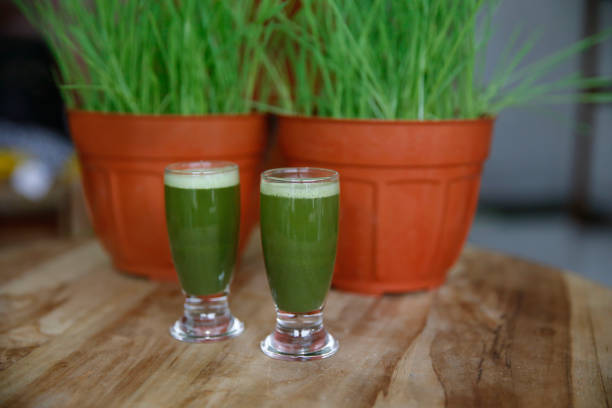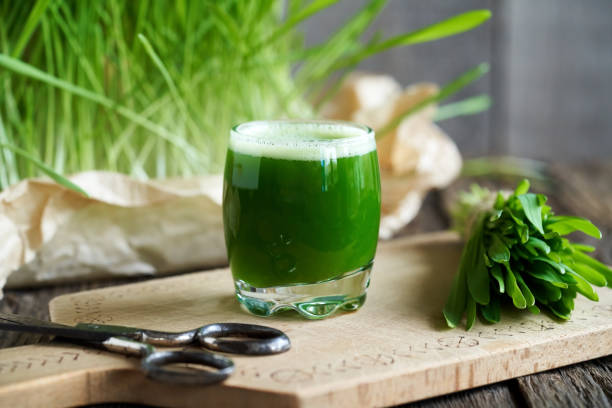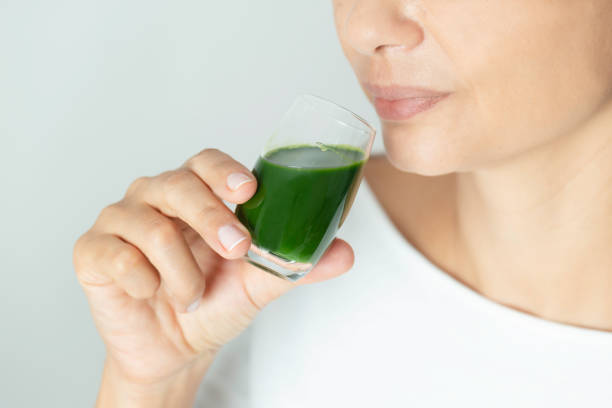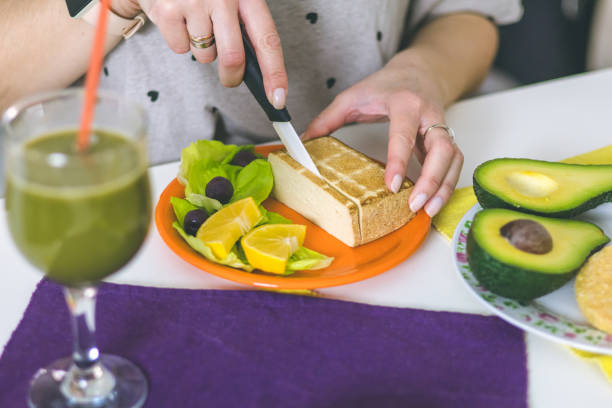I Tried Wheatgrass Smoothies for 7 Days—Here’s What Happened

I’ve always been curious about superfoods, especially the ones everyone talks about but few actually stick with. Wheatgrass kept popping up in wellness circles, juice bars, and even green smoothie kits I’d buy online—but I never gave it a real chance. People claimed it boosts energy, improves digestion, clears up your skin, and even detoxifies your body. Honestly, it sounded a little too good to be true.
So, I challenged myself to drink a wheatgrass smoothie every morning for 7 days straight. No skipping, no shortcuts. Just one full glass of green goodness each day. My goal wasn’t perfection—I just wanted to see if I’d notice any difference in how I felt, especially in terms of energy, digestion, and mental clarity. What happened over the course of those seven days definitely surprised me… and some of it wasn’t what I expected.
What Is Wheatgrass and Why Is It So Hyped?
Before I started my 7-day wheatgrass smoothie challenge, I wanted to understand what exactly I was putting into my body. Wheatgrass is the young, freshly sprouted leaves of the common wheat plant (Triticum aestivum). It’s typically harvested when it’s just a few inches tall—right at its nutritional peak. You can find it fresh, juiced, or in powdered form, which is what I used for convenience.
Wheatgrass is often called a “superfood” because it’s packed with nutrients like chlorophyll, iron, calcium, magnesium, amino acids, vitamins A, C, and E, and enzymes that are thought to help the body detoxify. Some wellness experts swear by it for everything from boosting immunity to clearing skin and supporting digestion. That hype definitely got my attention—and I was curious to see if it actually lived up to it.
How I Prepared My Daily Wheatgrass Smoothie recipe

I wanted to keep things simple and consistent throughout the 7 days, so I created a base smoothie recipe that I tweaked only slightly depending on what I had in my fridge. I used wheatgrass powder instead of fresh juice—mainly because it was easier to store, cheaper, and still packed with nutrients.
My Go-To Wheatgrass Smoothie Recipe:
- 1 tsp organic wheatgrass powder
- 1 frozen banana
- 1/2 cup frozen pineapple or mango (for sweetness)
- 1 cup spinach or kale
- 1 cup unsweetened almond milk
- 1 tbsp chia seeds (for fiber and texture)
- 1 tsp honey or maple syrup (optional)
I blended everything together for about 30–45 seconds until it was completely smooth. I’ll be honest—wheatgrass has a strong, earthy taste, but with banana and pineapple, it actually became pretty enjoyable. Some days I’d toss in a scoop of protein powder or a few ice cubes if I wanted it extra cold.
Sticking to this morning routine helped me start each day with something green and nourishing—and it definitely made me more mindful about my health. I was excited to see how my body would respond.
Day-by-Day Experience: What I Noticed Each Morning
Day 1: First Impressions
The very first morning, I was a bit nervous about the taste. Wheatgrass is known for its strong, grassy flavor, and I wasn’t sure how my smoothie would turn out. Thankfully, the banana and pineapple masked the earthiness pretty well. After finishing the glass, I felt a slight boost of alertness, but honestly, I wasn’t sure if it was placebo or real. Still, it was a refreshing way to start the day, and I felt proud of myself for sticking to the plan.
Day 2: Slight Boost in Energy
On day two, I noticed I wasn’t reaching for my usual mid-morning coffee quite as quickly. The smoothie gave me a subtle but steady energy lift that lasted longer than the caffeine buzz I’m used to. I also felt less bloated, which was a nice surprise since I sometimes struggle with digestion after breakfast.
Day 3: Digestive Changes
By the third day, my digestion seemed smoother. I usually have occasional tummy discomfort, but this week, it was much less frequent. I felt lighter and less sluggish after meals. Plus, my bathroom routine was more regular, which is always a good sign. I was starting to believe the detox claims might have some truth.
Day 4: Cravings and Mood
Midweek, I noticed my cravings for sugary snacks dropped significantly. I attributed this to the nutrient-rich smoothie filling me up and stabilizing my blood sugar. Mood-wise, I felt calmer and less jittery during stressful moments. It was subtle, but I appreciated the steadiness.
Day 5: Energy Plateau
On day five, the energy boost was steady but not as noticeable as the first few days. I figured my body was adjusting. However, I still felt less fatigued in the afternoons, which made my workdays more productive. I also realized that the ritual of having the smoothie helped me stay mindful about eating healthy the rest of the day.
Day 6: Skin Improvements?
I caught myself checking my reflection more often because my skin looked clearer and had a healthy glow. I don’t usually see quick changes like that, so I was excited. While I can’t say for sure it was 100% the wheatgrass smoothie, it definitely coincided with this experiment.
Day 7: Final Day Reflection
By the last day, drinking the wheatgrass smoothie felt natural—a part of my morning routine rather than a chore. I had more consistent energy, better digestion, fewer cravings, and a positive mood overall. While I didn’t feel like a superhero, I did feel healthier and more balanced. This 7-day challenge gave me enough reason to keep wheatgrass smoothies in my rotation—maybe not daily, but definitely a few times a week.
Physical & Mental Benefits I Experienced

After a week of drinking wheatgrass smoothies every morning, I definitely noticed some positive changes in both my body and mind. Physically, the first thing I felt was a more consistent energy level throughout the day. Unlike my usual energy crashes after coffee or sugary snacks, the energy from the wheatgrass smoothie was steady and natural. I felt less fatigued, especially during those mid-afternoon slumps, which made my workdays smoother and more productive.
Digestively, my body seemed to respond really well. My bloating decreased, and I experienced more regular digestion, which helped me feel lighter and less sluggish. I believe the fiber and enzymes in the wheatgrass played a big role in this. Another unexpected benefit was clearer, more glowing skin—I’m guessing the antioxidant properties of wheatgrass helped reduce inflammation and promote skin health.
Mentally, I found I was a bit calmer and more focused, especially in stressful moments. While I can’t say wheatgrass magically improved my mood overnight, it seemed to reduce the jitteriness I sometimes get from caffeine and helped me maintain a steady mental clarity. Overall, these combined effects made me feel healthier and more balanced by the end of the week.
Unexpected Side Effects (The Good & The Bad)
While most of my experience with wheatgrass smoothies was positive, I did encounter a few unexpected side effects—some pleasant, some a little less so.
The Good:
Around day three, I noticed a mild detox effect. I felt slightly more tired than usual in the evening and experienced a bit of a headache one afternoon. After some quick research, I learned this is common for beginners when introducing chlorophyll-rich foods like wheatgrass. It’s your body adjusting and flushing out toxins, which actually reassured me that the smoothies were doing something behind the scenes. Thankfully, this lasted only a day or two and quickly passed.
Another good surprise was improved hydration. Drinking a smoothie with water-rich ingredients like pineapple and almond milk combined with wheatgrass seemed to help me stay better hydrated throughout the day. I also noticed my breath was fresher—something I didn’t expect but definitely appreciated.
The Bad:
On the flip side, the strong grassy flavor wasn’t always easy to handle. Some mornings, I had to add extra fruit or honey to make it more palatable, which slightly increased the sugar content. Also, on two occasions, I felt mild stomach discomfort shortly after drinking the smoothie. It wasn’t severe, but it reminded me to start slow when introducing new superfoods and listen to my body.
Lastly, wheatgrass powder can be a bit pricey and not always easy to find fresh, which might make it less accessible for some people looking to try this.
Would I Keep Drinking Wheatgrass Smoothies?
After completing my 7-day wheatgrass smoothie challenge, I can honestly say I’m convinced of its benefits—but with a few personal tweaks. While drinking it every single day felt a bit intense, incorporating wheatgrass smoothies into my routine a few times a week feels sustainable and enjoyable.
I appreciated the consistent energy boost, improved digestion, and even the subtle skin glow. The ritual of making and drinking the smoothie also made me more mindful about my health and food choices throughout the day. Plus, it was a delicious way to sneak in some extra greens without much effort.
That said, I wouldn’t force myself to drink it daily because the taste can be strong and the powder a bit pricey. Instead, I plan to rotate wheatgrass smoothies with other green smoothies and superfood blends to keep things fresh and balanced. If you’re thinking about trying wheatgrass smoothies, I recommend starting slow, experimenting with flavors to suit your palate, and paying attention to how your body reacts.
For me, wheatgrass smoothies are a definite yes—as a nutritious, energizing addition rather than a strict daily rule.
My Go-To Wheatgrass Smoothie Recipe (Fast & Easy)

If you’re ready to try wheatgrass smoothies yourself, here’s the recipe I stuck with during my 7-day challenge. It’s quick to make, tastes great, and packs a powerful nutrient punch to start your day right:
Ingredients:
- 1 tsp organic wheatgrass powder
- 1 frozen banana (for creaminess and natural sweetness)
- ½ cup frozen pineapple or mango (adds a tropical twist and masks the grassy flavor)
- 1 cup fresh spinach or kale (extra greens never hurt!)
- 1 cup unsweetened almond milk (or any milk you prefer)
- 1 tbsp chia seeds (for fiber and texture)
- 1 tsp honey or maple syrup (optional, if you like it sweeter)
Instructions:
- Add all ingredients to a blender.
- Blend for 30–45 seconds until smooth and creamy.
- Pour into your favorite glass and enjoy immediately for maximum freshness.
This recipe balances the earthy flavor of wheatgrass with sweet, tropical fruits to make the smoothie both delicious and easy to drink. Feel free to customize it by adding protein powder, a squeeze of lemon, or even a handful of fresh mint.
Tools & Ingredients I Used
To make it easy for you to try wheatgrass smoothies at home, here are the exact products I used during my 7-day challenge. I’ve included some trusted options that I personally recommend and that deliver great quality and results:
- Organic Wheatgrass Powder
I used Organic Wheatgrass Powder because it’s fresh, finely ground, and sourced from trusted farms. It dissolves well in smoothies without clumping or bitterness. - High-Powered Blender
A powerful blender makes all the difference for getting a smooth, creamy texture. I use this blender, which effortlessly blends frozen fruit, greens, and powders into a silky smoothie every time. - Unsweetened Almond Milk
For a creamy base without added sugar, I love Unsweetened Almond Milk. It’s dairy-free, low-calorie, and has a mild flavor that pairs perfectly with wheatgrass.
If you’re interested, you can check out these products using the links above. If you make a purchase, I may earn a small commission at no extra cost to you — which helps me keep testing and sharing honest reviews like this one. Thank you for your support!
Final Verdict: Is Wheatgrass Worth Adding to Your Routine?
After a full week of drinking wheatgrass smoothies every morning, I’m confident that wheatgrass deserves a spot in your wellness routine—especially if you’re looking for a natural way to boost energy, support digestion, and add a powerful dose of nutrients to your day. While it’s not a miracle cure, the benefits I experienced, from steady energy to clearer skin, were noticeable and genuinely helpful.
That said, wheatgrass isn’t for everyone. The flavor can be strong and takes some getting used to, and the cost of quality wheatgrass powder might be a consideration. But if you start slowly, mix it with fruits you love, and listen to your body, wheatgrass can be a delicious and healthful addition—not a chore.
For me, it’s a “yes” to keeping wheatgrass smoothies in my weekly lineup. If you’re curious, give it a try with the simple recipe I shared and see how your body responds. Sometimes, the smallest green habits can create the biggest positive changes.
